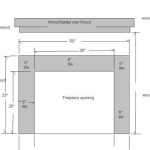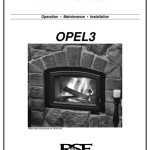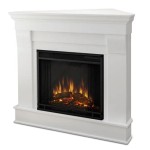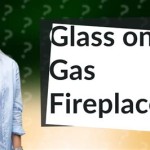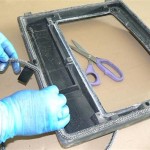Masonry Fireplace Kits: A Comprehensive Guide
Masonry fireplaces have long been prized for their aesthetic appeal, heating efficiency, and enduring quality. Constructing a traditional masonry fireplace, however, is a complex and labor-intensive undertaking. Masonry fireplace kits offer a streamlined alternative, providing pre-engineered components that simplify the construction process while retaining the benefits of a traditional fireplace.
This article provides a comprehensive overview of masonry fireplace kits, covering their advantages, components, installation considerations, and factors to consider when selecting a kit. It delves into the specifics of different kit types and the overall process of incorporating a masonry fireplace into a home, be it during new construction or a remodeling project.
The allure of a masonry fireplace lies in its ability to radiate heat effectively for extended periods even after the fire has died down. The thermal mass of the masonry materials, typically brick or stone, stores heat and slowly releases it into the surrounding space. This contrasts with metal fireplaces, which tend to heat up quickly but also cool down rapidly. Masonry fireplaces also add architectural character and value to a home, serving as a focal point and creating a warm, inviting atmosphere. While historically constructed by hand, brick by brick, modern masonry fireplace kits aim to replicate the look and performance of these traditional structures with improved efficiency.
Key Advantages of Masonry Fireplace Kits
Masonry fireplace kits offer several advantages over traditional site-built masonry fireplaces. These advantages stem primarily from the pre-engineered nature of the kits, offering predictability in both design and construction.
Firstly, cost-effectiveness is a significant benefit. Site-built fireplaces require the expertise of skilled masons, which translates into higher labor costs. Material waste is also a factor, as masons must cut and fit individual bricks or stones. Masonry kits, on the other hand, are designed to minimize waste and reduce labor time. The pre-cut components ensure precise fitting, and the simplified construction process reduces the need for highly specialized skills. This can yield substantial savings on both material and labor expenses. This cost efficiency makes the aesthetic and functional benefits of a masonry fireplace accessible to a wider range of homeowners.
Secondly, installation speed is considerably faster with a kit. Traditional masonry fireplaces can take weeks or even months to construct, depending on the complexity of the design and the availability of skilled labor. Masonry fireplace kits, with their pre-engineered components and clear instructions, significantly reduce the construction time. The simplified assembly process allows for quicker completion, minimizing disruption to the home and allowing homeowners to enjoy their new fireplace sooner. A well-prepared homeowner or contractor, with basic construction skills, can often install a kit in a matter of days, not weeks.
Thirdly, design consistency and structural integrity are enhanced. Site-built fireplaces rely on the skill and experience of the mason to ensure proper construction and adherence to building codes. While experienced masons are highly capable, inconsistencies can sometimes occur. Masonry fireplace kits are engineered designs that have been tested and approved to meet specific building codes and safety standards. The pre-engineered components ensure consistent dimensions and structural integrity, reducing the risk of errors or problems that can arise with site-built fireplaces. This standardized approach provides greater peace of mind for homeowners and builders alike.
Finally, predictability in performance is improved. A properly designed masonry fireplace needs to draw air and exhaust smoke efficiently. Traditional builds can be susceptible to issues with draft and smoke spillage if the design is not perfectly executed. Masonry fireplace kits are often designed with specific firebox dimensions and chimney designs that have been tested to ensure proper draft and combustion. This gives the homeowner a more predictable and efficient burning experience.
Components of a Typical Masonry Fireplace Kit
A typical masonry fireplace kit consists of a variety of components, all designed to work together seamlessly. These components are carefully manufactured to precise specifications, ensuring a smooth and efficient installation process.
The core of the kit is the firebox, the area where the fire is actually built. This is usually constructed from refractory brick, a heat-resistant material that can withstand the high temperatures of a wood-burning fire. The firebox may come in multiple pieces that are easily assembled utilizing mortar or a similar high-temperature sealant. The design of the firebox influences the efficiency of combustion and the overall heating performance of the fireplace.
The smoke chamber is located above the firebox and serves to funnel smoke and gases into the chimney. Its shape is critical for creating a smooth and efficient draft. In a traditional build, this area requires significant skill to ensure proper tapering. In a kit, the smoke chamber is typically a pre-formed unit made of lightweight concrete or a similar durable material. This simplifies the construction process and ensures a consistent shape, leading to improved draft and reduced risk of smoke spillage.
The chimney is a vital component of any fireplace, drawing smoke and combustion byproducts up and away from the living space. Masonry fireplace kits often include sections of chimney, usually made of concrete or clay flue liners encased in a masonry shell, or prefabricated insulated metal chimney systems. These sections are designed to interlock and create a secure, airtight chimney. The height of the chimney is crucial for generating adequate draft, and the kit will specify the appropriate height based on the fireplace design and local building codes.
The lintel is a horizontal beam that supports the masonry above the firebox opening. It is typically made of steel or reinforced concrete and is designed to withstand the weight of the surrounding masonry. The lintel is a critical structural element that ensures the stability of the fireplace. The kit will provide the appropriate lintel based on the firebox opening dimensions.
Many kits include facing materials, such as brick, stone, or decorative concrete panels. These are used to create the finished look of the fireplace. The facing materials may be pre-cut and shaped for easy installation, or they may require some cutting and fitting on site. The choice of facing materials is largely a matter of personal preference and should complement the overall design of the home.
Finally, the kit will almost always include detailed installation instructions. These instructions provide step-by-step guidance on how to assemble the fireplace. These instructions are critical for ensuring proper construction and adherence to building codes. It is essential to read and understand the instructions thoroughly before beginning the installation process. The kit might also include specialized mortar or sealant formulated for high-temperature applications.
Factors to Consider When Selecting a Masonry Fireplace Kit
Choosing the right masonry fireplace kit requires careful consideration of several factors, including size, style, fuel type, building codes, and budget. A well-informed decision ensures that the fireplace meets the homeowner's needs and expectations.
The size of the firebox is a primary consideration. A larger firebox will generate more heat, but it will also require more fuel. The size of the room or area to be heated should be taken into account when selecting the firebox size. A firebox that is too large may overheat a small room, while a firebox that is too small may not provide enough heat for a large room. The dimensions of the available space will also be relevant. Measure the area where the fireplace will be installed to ensure that the chosen kit will fit comfortably.
The style of the fireplace should complement the overall design of the home. Masonry fireplace kits are available in a variety of styles, from traditional to contemporary. Consider the architectural style of the home and choose a kit that blends seamlessly with the existing decor. The facing materials, such as brick or stone, can also be chosen to match the home's color scheme and aesthetic preferences.
The fuel type is another important consideration. Most masonry fireplace kits are designed for burning wood, but some kits can be adapted for burning gas. If a gas fireplace is desired, ensure that the kit is compatible with gas and that the necessary gas line connections are available. Wood-burning fireplaces require a chimney for venting smoke and gases, while gas fireplaces may require a different type of venting system. Consider the availability and cost of different fuel types when making a decision.
Local building codes must be adhered to. These codes regulate the construction and installation of fireplaces to ensure safety and prevent fire hazards. Before purchasing a masonry fireplace kit, check with the local building department to determine the specific code requirements. The kit should be certified to meet these codes, and the installation must be performed in accordance with the code requirements. This may involve obtaining permits and inspections.
Finally, the budget should be established and adhered to. Masonry fireplace kits vary in price depending on size, style, and features. It is important to set a budget and choose a kit that fits within that budget. In addition to the cost of the kit, budget for the cost of installation, which may include labor, materials, and permits. It is also important to factor in the cost of fuel and maintenance.
By carefully considering these factors, homeowners can choose a masonry fireplace kit that meets their needs, complements their home, and provides years of warmth and enjoyment.

Semplice Outdoor Fireplace Kit Rcp Block Brick

Masonry Fireplace Kits Prefabricated Fireplaces Masonlite Sandkuhl

Diy Outdoor Fireplace Kit Fremont Makes Hardscaping And Easy

Outdoor Fireplace Kits Stonewood S Cape Cod Ma Nh Ct

Outdoor Fireplace Kits Masonry Industries Inc

Outdoor Fireplace Kits Masonry Stone

Outdoor Fireplace Experts The 1 Dealer For Fireplaces

Brooklyn Fire Place Kit Shaw Brick

How To Build An Outdoor Fireplace 48 Contractor Kit Extended Version

Outdoor Fireplace Kits 36 In Pre Engineered Arched Masonry Mediterranean Terrace Other By Mantelsdirect Com Houzz Ie

